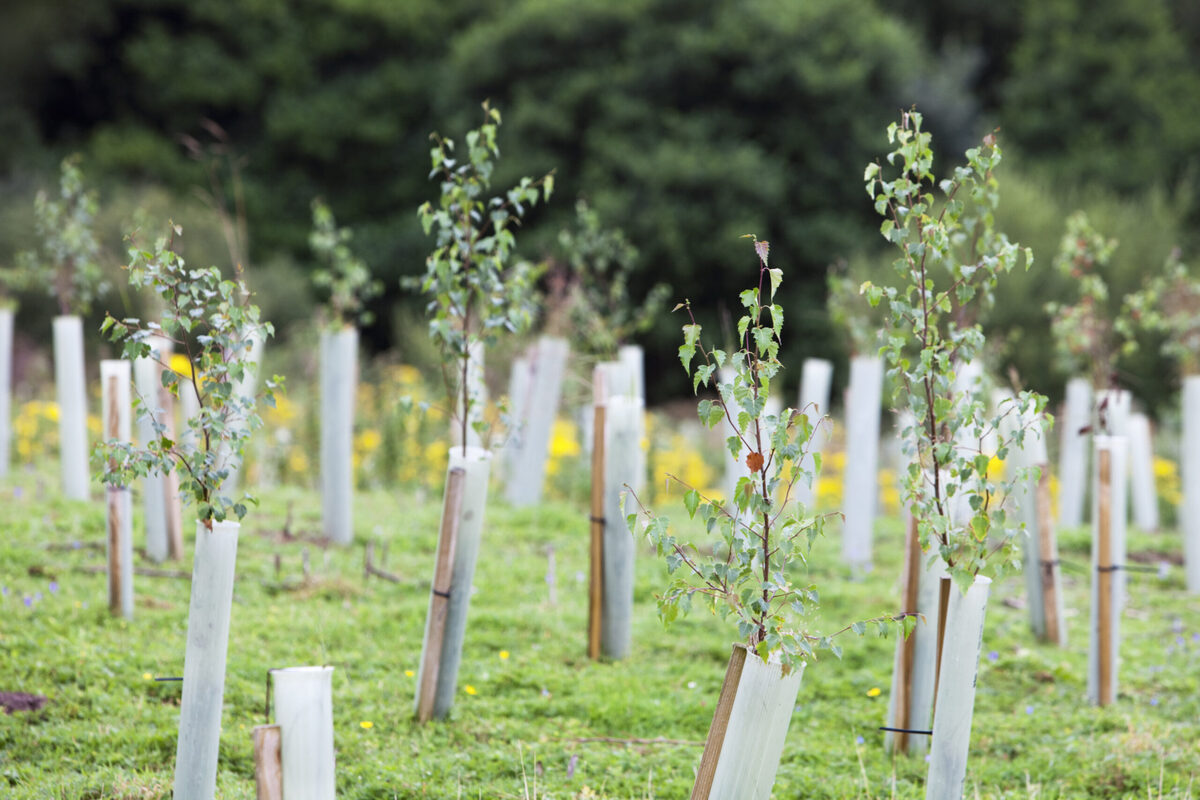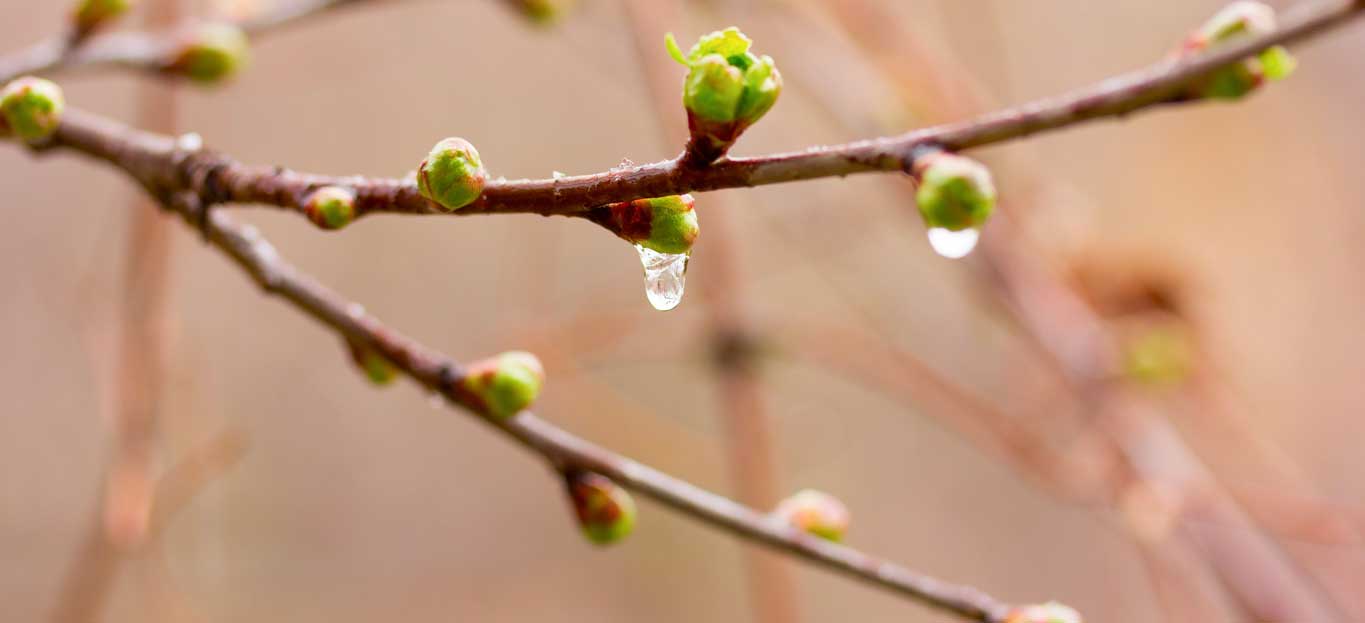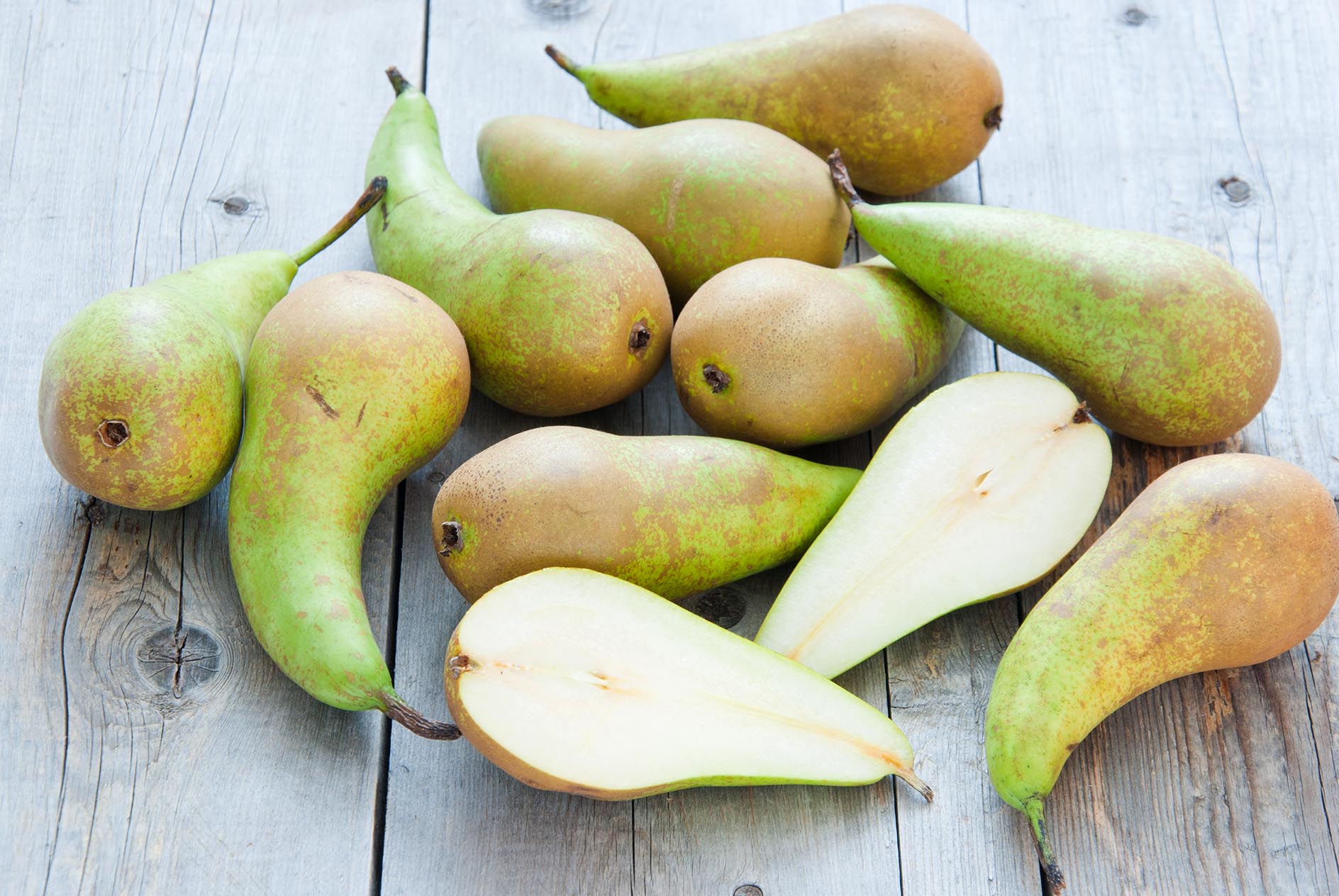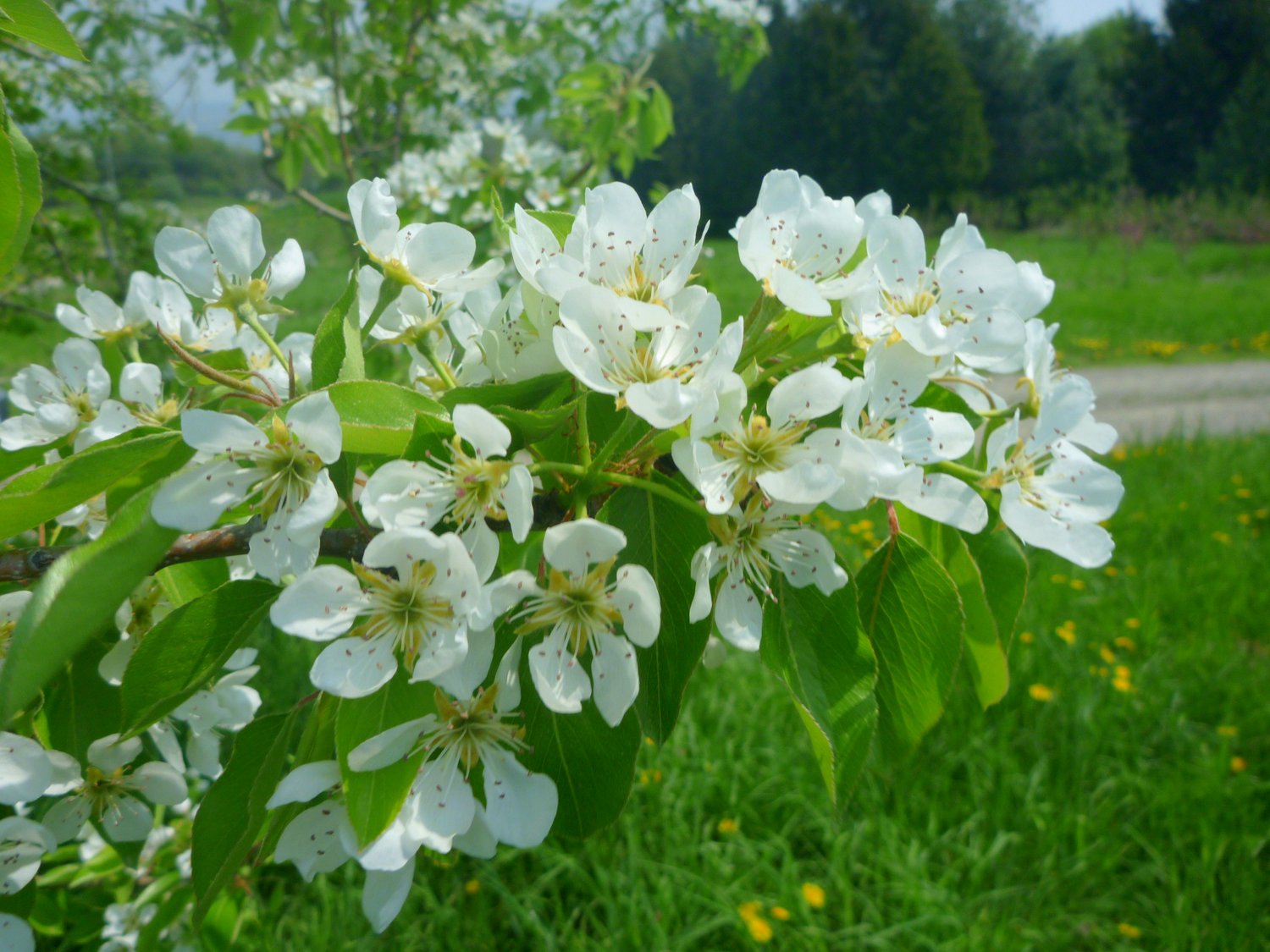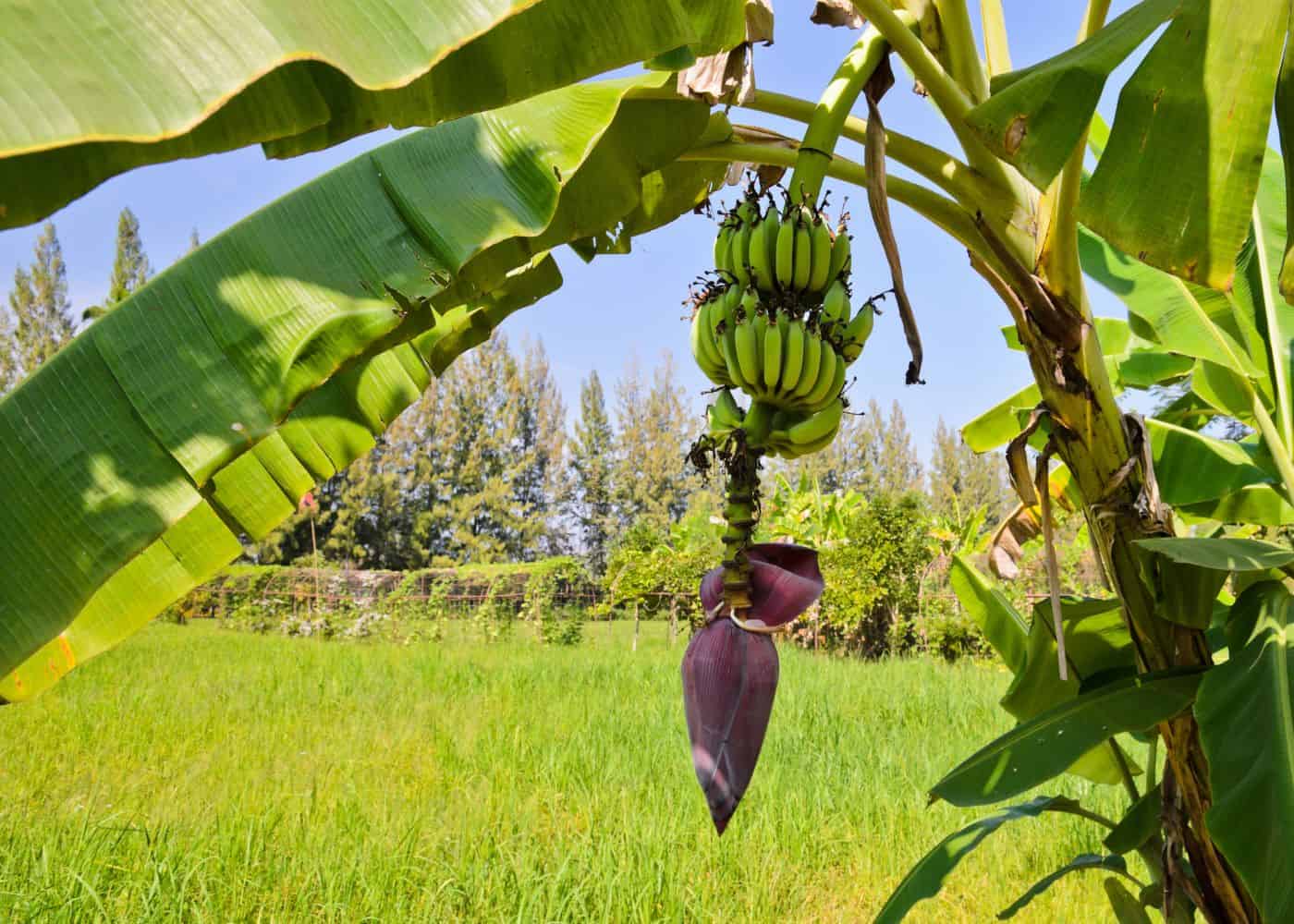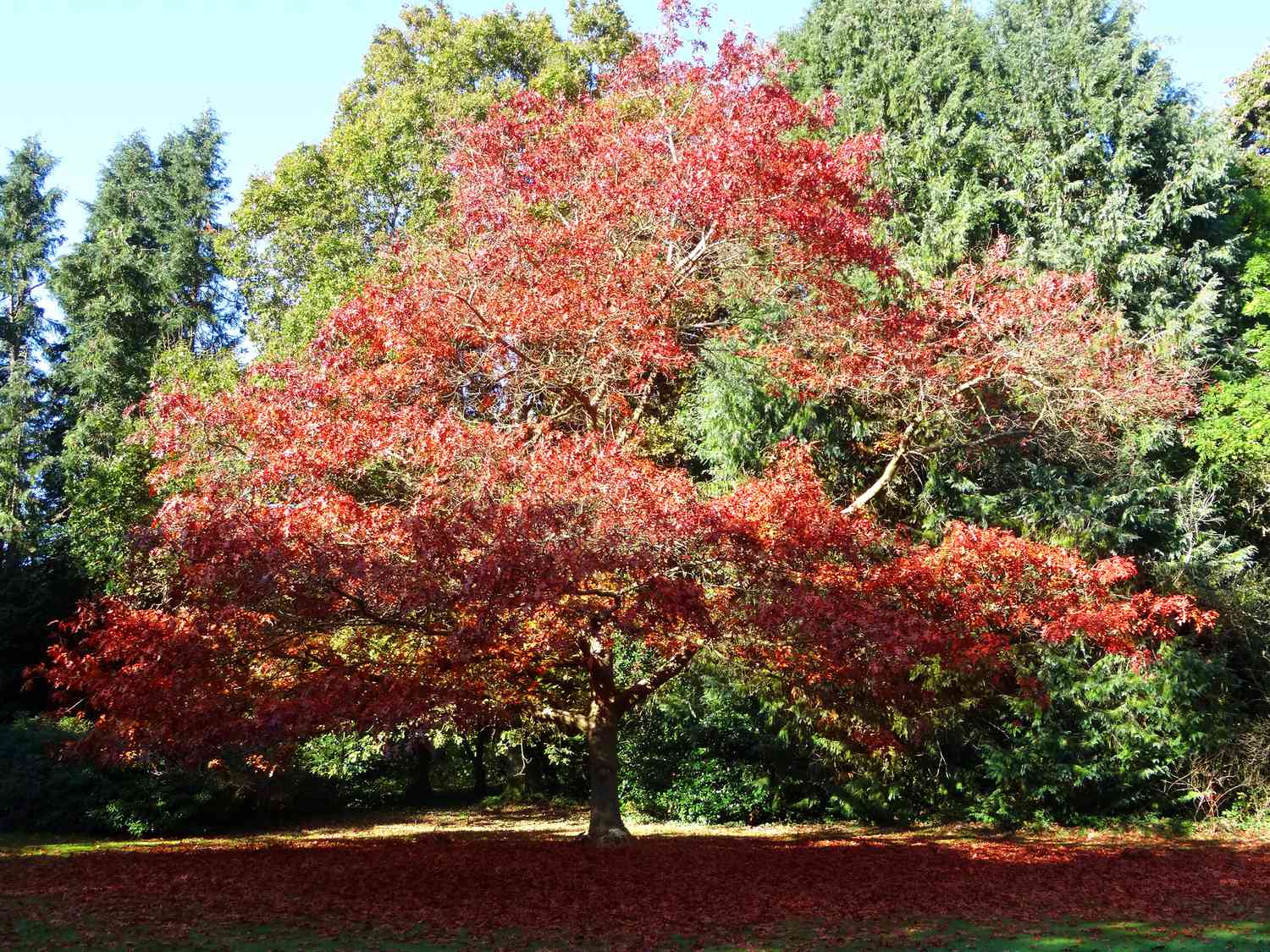Home>Types of Gardening>Edible Gardening>When Do Pear Trees Blossom
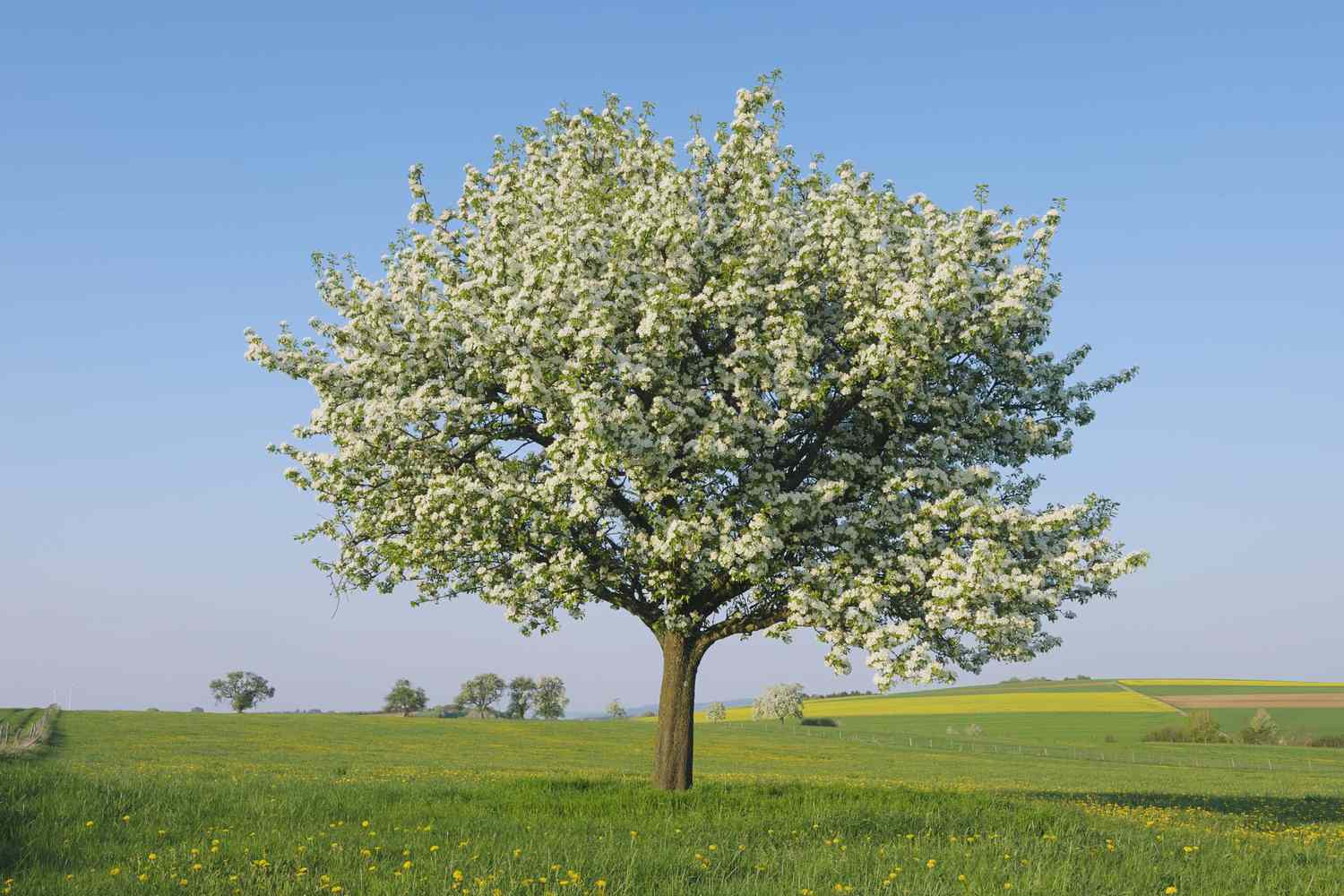

Edible Gardening
When Do Pear Trees Blossom
Modified: January 22, 2024
Discover when pear trees blossom and optimize your edible gardening. Find the best time to cultivate pear trees for a fruitful harvest.
(Many of the links in this article redirect to a specific reviewed product. Your purchase of these products through affiliate links helps to generate commission for Chicagolandgardening.com, at no extra cost. Learn more)
Table of Contents
- Introduction
- Factors Affecting Pear Tree Blossoming
- Climate and Temperature Requirements
- Chilling Hours and Dormancy
- Varieties of Pear Trees and Their Blossoming Time
- Environmental Factors and Growing Conditions
- Importance of Blossom Time for Pear Tree Yield
- Techniques to Promote Blossoming in Pear Trees
- Conclusion
Introduction
Welcome to the world of edible gardening! Whether you have a small backyard or a sprawling garden, growing your own fruits and vegetables is not only a rewarding experience but also a sustainable way to ensure a fresh supply of produce.
Among the many delicious fruits that you can grow in your garden, pear trees are a popular choice for their sweet and juicy offerings. However, for successful cultivation, it is crucial to understand when pear trees blossom and the factors that influence this important stage in their growth cycle.
In this article, we will delve into the fascinating world of pear tree blossoming, exploring the various factors that affect this crucial stage, such as climate, temperature, chilling hours, and environmental conditions. We will also discuss the significance of blossom time in determining the yield of your pear trees and provide valuable techniques to promote healthy blossoming.
So, whether you are a seasoned gardener or a beginner venturing into the world of edible gardening, read on to discover the secrets of when pear trees blossom and how to optimize their growth for a bountiful harvest.
Factors Affecting Pear Tree Blossoming
Several factors influence the blossoming of pear trees, determining when they will burst into a stunning display of delicate white or pink flowers. Understanding these factors can help you plan and optimize the growth of your pear trees.
Climate and Temperature Requirements:
Pear trees thrive in temperate climates, requiring a certain range of temperatures to initiate and sustain the blossoming process. They generally prefer cool winters and mild springs, with average temperatures between 45°F to 60°F (7°C to 15°C).
Chilling Hours and Dormancy:
Pear trees, like many fruit trees, go through a period of dormancy during winter. This dormant phase is necessary for the trees to accumulate sufficient chilling hours, which refers to the total number of hours the tree is exposed to temperatures below 45°F (7°C). This chilling period is crucial for triggering blossoming and ensuring optimal fruit set and development.
Varieties of Pear Trees and Their Blossoming Time:
Not all pear trees blossom at the same time. The blossoming period varies depending on the variety of pear tree you have planted. Early-blooming pear tree varieties typically burst into bloom in early spring, while late-blooming varieties may not blossom until late spring or even early summer.
Environmental Factors and Growing Conditions:
Aside from climate and chilling hours, other environmental factors and growing conditions can also affect the blossoming of pear trees. The availability of sunlight, soil fertility, and water supply all play a role in determining the vigor of the tree and its ability to produce an abundance of blossoms.
By understanding these factors, you can make informed decisions regarding the cultivation and care of your pear trees. Providing the ideal conditions and optimizing these factors will not only promote healthy blossoming but also contribute to the overall vitality and productivity of your pear trees.
Climate and Temperature Requirements
The climate and temperature play a crucial role in determining when pear trees will blossom. Pear trees thrive in temperate regions and require specific temperature ranges to initiate and sustain the blossoming process.
Pear trees prefer cool winters and mild springs, with average temperatures between 45°F to 60°F (7°C to 15°C). These moderate temperatures provide an optimal environment for the development of flower buds during the dormant period.
Extreme temperature fluctuations, especially during the budding stage, can hinder the successful blossoming of pear trees. Frost or heatwaves can damage the fragile flower buds and result in poor or no blossoms at all. It is essential to choose the appropriate location for planting pear trees, taking into consideration the local climate and microclimates present in your area.
In regions where winters are extremely cold, late spring frost can be a concern. You can protect your pear trees by covering them with frost blankets or using techniques like overhead sprinkling, which helps insulate the buds and protect them from freezing temperatures.
On the other hand, regions with hot or arid climates may require additional measures to ensure the trees receive adequate water and nutrients to sustain healthy blossoming. Regular irrigation and the use of mulch around the base of the tree can help maintain soil moisture and prevent stress during periods of high heat.
Overall, understanding and providing the appropriate climate and temperature conditions for your pear trees will contribute to successful blossoming and promote optimal fruit set for a bountiful harvest.
Chilling Hours and Dormancy
Chilling hours and dormancy play a vital role in the blossoming of pear trees. These factors are closely connected and are crucial for the tree’s ability to enter the blossoming phase and produce a healthy crop of fruit.
During winter, pear trees undergo a period of dormancy where they enter a restful state. This dormancy period is necessary to accumulate sufficient chilling hours, which refers to the cumulative time the tree is exposed to temperatures below 45°F (7°C).
Chilling hours are essential because they help break the tree’s dormancy and initiate the blossoming process. The cold temperatures trigger biochemical changes within the tree, allowing it to transition from the dormant phase to the active growth phase.
The required number of chilling hours varies depending on the pear tree variety. Some varieties may require as little as 300 to 400 chilling hours, while others may need 800 to 900 chilling hours. It is important to know the specific chilling hour requirements of the pear tree variety you are growing.
If the tree does not receive enough chilling hours during winter, it may not enter the blossoming phase properly, resulting in reduced or delayed flowering. Conversely, excessively long chilling hours could also negatively impact the tree’s ability to blossom, leading to reduced yields or irregular fruit set.
Adequate winter chilling is crucial for not only triggering blossoming but also promoting overall tree health and vigor. Insufficient chilling can result in weak bud development, increased susceptibility to pests and diseases, and decreased fruit quality.
It’s important to monitor the chilling hours in your region by consulting local agricultural agencies or using specialized chilling hour calculators. This information will help you determine the appropriate pear tree varieties to plant and ensure they receive the necessary chilling hours to achieve optimal blossoming and fruit production.
Varieties of Pear Trees and Their Blossoming Time
The blossoming time of pear trees can vary depending on the specific variety that you have planted in your garden. Each pear tree variety has its own unique characteristics, including its preferred blooming period.
Early-blooming pear tree varieties typically burst into bloom in early spring, typically around March or April, depending on the climate and region. These early bloomers include popular varieties such as ‘Bartlett,’ ‘Red Bartlett,’ and ‘Anjou.’ These varieties tend to produce flowers and fruit earlier in the season.
Middle-blooming pear tree varieties usually flower in mid-spring, around April to May. Examples of middle-blooming varieties include ‘Bosc,’ ‘Comice,’ and ‘Seckel.’ These varieties are known for their rich flavor and distinctive texture.
Lastly, there are late-blooming pear tree varieties that may not blossom until late spring or even early summer, typically in May or June. These varieties include ‘Conference,’ ‘Onward,’ and ‘Winter Nelis.’ Late-blooming varieties are often more suitable for regions with cooler climates since they can avoid late frosts that can harm early-blooming varieties.
It’s important to consider local climate conditions when selecting pear tree varieties for your garden. Choosing a mix of early, middle, and late-blooming varieties can help ensure a more extended and continuous pear blooming season.
By incorporating different blooming times, you can maximize cross-pollination opportunities, which can significantly improve fruit set and yield. Cross-pollination occurs when flowers are pollinated by pollen from a different variety. This can enhance the overall quality and size of the fruit.
Researching and selecting a diverse range of pear tree varieties that blossom at different times will not only provide visual interest in your garden but also increase the chances of a successful harvest.
Environmental Factors and Growing Conditions
In addition to climate and temperature, various environmental factors and growing conditions can significantly impact the blossoming of pear trees. Creating the ideal growing environment will promote healthy tree growth, enhance blossoming, and increase the likelihood of a successful harvest.
One crucial factor is sunlight. Pear trees require full sun exposure to thrive and produce abundant blooms. Make sure to plant your trees in a location that receives at least 6 to 8 hours of direct sunlight each day. Insufficient sunlight can lead to poor blossoming and reduced fruit production.
Soil fertility is another vital consideration. Pear trees flourish in well-drained soil that is rich in organic matter. Prior to planting, prepare the soil by incorporating compost or well-rotted manure to improve its nutrient content and structure. Conduct a soil test to determine if any additional amendments, such as lime or fertilizer, are needed to ensure optimal growing conditions.
Water is essential for the health and blossoming of pear trees. Adequate moisture is particularly important during the blooming period to support flower development. Ensure that your trees receive adequate irrigation, especially during dry spells. However, be cautious not to overwater, as excessively wet soil can lead to root rot and other diseases.
Proper pruning is also vital for pear tree blossoming. Pruning should be done during the dormant period, typically in late winter or early spring, before bud break. Aim to remove dead, diseased, or crossing branches to improve airflow and sunlight penetration. Pruning helps maintain the tree’s shape, encourages vigorous growth, and promotes the development of strong flower buds.
In addition to these factors, paying attention to pest and disease management is crucial. Regularly monitor your trees for common pests such as aphids, caterpillars, or pear psylla. Implement integrated pest management strategies, such as using beneficial insects or organic insecticides, to control pest populations effectively. Disease prevention through proper sanitation and the use of disease-resistant varieties can also contribute to healthy blossoming.
By optimizing these environmental factors and growing conditions, you can create a favorable environment for your pear trees, encouraging robust growth and abundant blossoming. A healthy tree with abundant flowers will lay the foundation for a fruitful harvest.
Importance of Blossom Time for Pear Tree Yield
The timing of blossoming in pear trees is of utmost importance as it directly affects the eventual yield of the trees. The blossoming period is a crucial stage in the tree’s growth cycle, as it is during this time that pollination occurs and fruit development begins.
Proper synchronization between the blossoming of pear trees and the arrival of pollinators, such as bees, is vital for successful pollination. During the blooming period, the flowers produce pollen, which needs to be transferred to the stigma of other flowers for fertilization to occur. This cross-pollination process is essential for fruit set and the formation of healthy, fully developed pears.
Timing is particularly critical because flowers that are not properly pollinated will not develop into fruit. This can lead to a reduced yield or even complete fruit loss. Factors such as weather conditions and the availability of pollinators can influence successful pollination, highlighting the need for proper timing of blossoming.
Additionally, the duration of the blossoming period can impact the overall yield of the pear trees. A longer blooming period increases the likelihood of successful pollination, as it provides more opportunities for the transfer of pollen between flowers. This can result in a higher fruit set and ultimately, a more abundant harvest.
Timing also plays a role in the prevention of potential yield-reducing factors. For instance, late-blooming varieties may be better equipped to avoid early spring frosts that could damage or kill early-blooming buds. By blooming later in the season, these varieties can escape the risk of frost damage, leading to a higher chance of successful fruit development.
Furthermore, the timing of blossom also affects the timing of fruit ripening. Pear varieties that blossom and set fruit earlier in the season will typically ripen earlier as well. This allows for an extended harvest period, which can be advantageous for commercial growers or those who want to enjoy a continuous supply of fresh, homegrown pears throughout the season.
Understanding the importance of blossom time in relation to yield can help growers make informed decisions about pear tree varieties and cultivation practices. By selecting suitable varieties and carefully managing the timing and conditions of blossoming, it is possible to maximize the yield potential of pear trees and enjoy a plentiful harvest.
Techniques to Promote Blossoming in Pear Trees
Promoting healthy and abundant blossoming in pear trees is crucial for a successful harvest. Fortunately, there are several techniques you can employ to optimize the blossoming process and increase the chances of a bountiful crop.
Pruning: Proper pruning is essential for pear tree health and encourages the development of strong flower buds. Prune during the dormant period to remove dead or diseased branches. Additionally, thinning out crowded areas can improve airflow and sunlight penetration, promoting better blossoming.
Pollination: Ensuring successful pollination is crucial for fruit set. Planting different varieties of pear trees that bloom at the same time can enhance cross-pollination. Attracting pollinators to your garden, such as bees, can also increase the chances of successful pollination. Planting companion flowers and avoiding the use of harmful pesticides can help create a pollinator-friendly environment.
Fertilization: Providing your pear trees with adequate nutrients is essential for robust blossoming. Conduct a soil test to determine any deficiencies and amend the soil accordingly. Apply a balanced fertilizer in early spring to promote healthy growth and blooming. Organic options, such as compost or well-decomposed manure, can also provide essential nutrients to support blossoming.
Watering: Proper watering is important for the development of flower buds. During the blooming period, ensure that your pear trees receive regular irrigation to prevent drought stress. Deep watering, allowing the water to reach the root zone, is more effective than shallow, frequent watering.
Chilling Requirements: Different pear tree varieties have varying chilling requirements. Ensure that your chosen variety’s chilling hours are met during winter by consulting local agricultural resources. Providing the necessary chilling hours will help the trees break dormancy and promote healthy blossoming.
Temperature and Frost Protection: Extreme temperatures and late frosts can negatively impact blossoming. Plant pear trees in locations that are protected from strong winds and late frosts. Consider using protective measures, such as frost blankets or overhead sprinklers, during late frosts to shield the tree and blossoms from freezing temperatures.
Pest and Disease Control: Pests and diseases can affect the health and blooming of pear trees. Implement integrated pest management practices to prevent pest infestations and disease outbreaks. Regularly inspect your trees for signs of pests or diseases and take appropriate action, such as applying organic insecticides or disease-resistant varieties.
By employing these techniques, you can create an optimal environment for pear tree blossoming, ensuring healthy flower development and increasing the likelihood of a fruitful harvest. Remember to tailor your approach to suit the specific requirements of your pear tree varieties and local growing conditions.
Conclusion
Understanding when pear trees blossom and the factors that influence their blossoming is essential for successful cultivation and a fruitful harvest. Climate and temperature requirements, chilling hours, pear tree varieties, and environmental factors all play a crucial role in determining the timing and abundance of blossoming.
Creating an ideal environment for pear tree blossoming involves providing the right conditions such as sunlight, well-drained and fertile soil, proper watering, and appropriate pruning techniques. Timing is crucial, as it affects pollination, fruit set, and the overall yield of the trees. Choosing a mix of early, middle, and late-blooming pear tree varieties can extend the blooming period and increase the chance of successful cross-pollination.
By considering these factors and implementing techniques such as proper pruning, promoting pollination, ensuring adequate nutrients, and protecting against extreme temperatures and pests, you can maximize the blossoming potential of your pear trees.
Through careful planning and cultivation, you can enjoy the beauty of pear tree blossoms and reap the delicious rewards of a bountiful pear harvest. So, whether you are a seasoned gardener or a beginner, embrace the world of edible gardening and take delight in the beauty and abundance that pear trees can bring to your garden.
